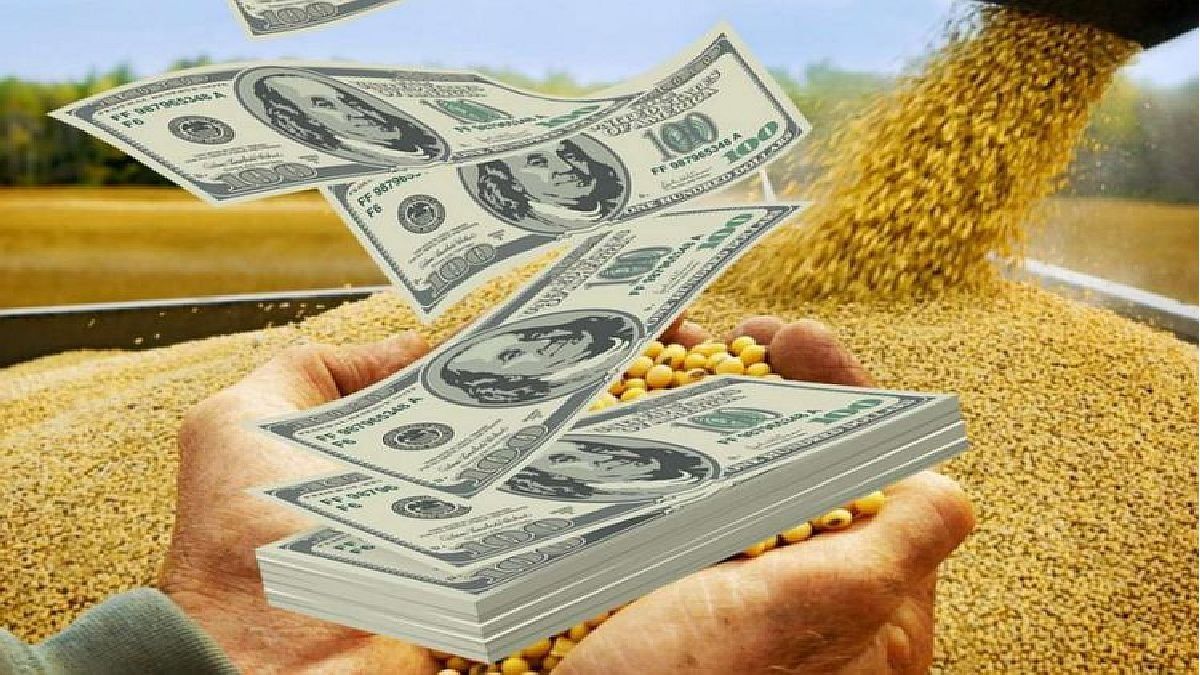The Government announced an understanding with the International Monetary Fund(IMF) to advance the review of the economic program of Argentina, which will allow unlocking disbursements Committed for the second semester. It is clear that this, as well as the measures that were applied accordingly with this rapprochement, will have their effect on the dollar and the City begins to digest what it will be.
Let us remember that, as part of the intense negotiations, the Government formalized a battery of key measures. First, he established a fixed exchange rate for corn and regional economiesfixing the dollar in $340 pesos. In addition, they determined various rates for the COUNTRY tax to be applied to imports of goods and serviceswith ranges from 7.5% up to 25%. Finally, it was decided to unify the value of the solidarity dollar and the card dollarsetting them both at the price that the latter had.
For most economists and analysts, the measures, without a consistent plan behindresult in a “covert devaluation” and would be pointing to no validate a discrete jump in the exchange rate, which added to the drain on Central Bank reserves and the electoral tension, a disorderly devaluation would end up spiraling prices of the economy.
For others, the measures announced by the Minister of Economy, Sergio Massaare a patch that only seeks to “reinforce” the collection of the third quarter and bring the fiscal result closer to the goal agreed with the IMF
Dollar: the measures under the magnifying glass of analysts
The announced measures could be considered as a kind of devaluationbut it is important to point out that they do not become a “full” devaluationexplain to Ambit the economist Natalia Motyl noting that this is because certain imports, such as fuel and inputs for food production, were left “excluded from the tax“, thus avoiding an increase significant of business costs.
According to the economist, in this way, The aim is to prevent the increase in final prices from negatively affecting wages of the workers, since a complete devaluation of wages would be much more damaging that the effect of this tax. “To achieve a full devaluation, the exchange rate should be positioned today in values above $500, which is considerably higher than the currently observed exchange rate,” warns Motyl.
Dollars: the US$2 billion goal is “ambitious”
Regarding the differential exchange rate, Motyl maintains that the Government proposes it as a measure that seeks to stimulate a greater supply currency in the market. However, achieving a goal $2,000 default “would be ambitiousas this depends on two factors,” he explains: first of allthe distance in time from to the exchange rate correction, which the market estimates will occur after the elections; and in second place, the credibility that the Government has to maintain a delayed exchange rate until the elections. Currently, both factors indicate that a dollar at $500 would be considered cheapcomments Motyl, so it does not make sense to liquidate currencies in today’s market more than to cover costs.
dollar-agro-5-grandejpg.jpg
On the other hand, for the analyst the unification of the card and solidarity dollar seeks to eliminate the differences between the different exchange ratesso that it is “iIt makes no difference to buy dollars in the blue market or in the official market“However, this could lead to an increase in the demand for dollars in the blue market,”thus increasing the gap between exchange rates“-
Fiscal goal with the IMF and “more patches”
For Eugenio Marichief economist of the Liberty and Progress Foundation, the measures are “another patch that seeks more than anything to reinforce the collection of the third quarter and bring the fiscal result closer to the goal with the IMF”, he maintains in statements to this medium.
In addition, he adds, they introduce greater “discretion because it is up to the Executive to define the goods and services that are affected by the new taxes and differential exchange rates. In this sense and according to her analysis, Mari considers that it follows “messing up the exchange scheme“.
And he comments that in terms of prices the aforementioned “will push up the value of tradables and will contribute a few tenths of a point in the CPI for August“.
While, GMA Capital Research He estimates that the ups and downs in Washington “together with the deterioration of macroeconomic conditions” would not have been “innocuous” for financial stability. And the focus of the storms developed in the exchange rate orbit, even so, against the eventual tax on imports and new differential exchange rates“instruments tied to the wholesale dollar would lose effectiveness.”
Dollar: “far from the logic of supply and demand”
“It was proposed a kind of devaluation covert, with mechanisms that move the dollar away from the logic of supply and demand,” Ariel Tejara, head of the Analysis Department of the Grassi SA brokerage, told Ámbito. producer’s income via differential exchange ratein a context of numbers hit by the exchange gap, retentions and drought”, is something that can be “celebrated”.
Although the improvement of the $340/U$S proposal may be a matter of discussion, “it represents 25% of the currently received exchange rate“, he assures. And he adds: “We can think of a significant improvement in the price of products in terms of dollar billsapplying the MEP exchange rate to the result of sales. We will have to be attentive to the evolution of the market.
Regarding the impact of the measure on agriculture, he warns that “it should boost the sales of producers”, although, in any case, details of “regulations, linked to key issues, such as products reached and availability of dollar linked accounts for producers and intermediaries” still have to be awaited.
Source: Ambito




